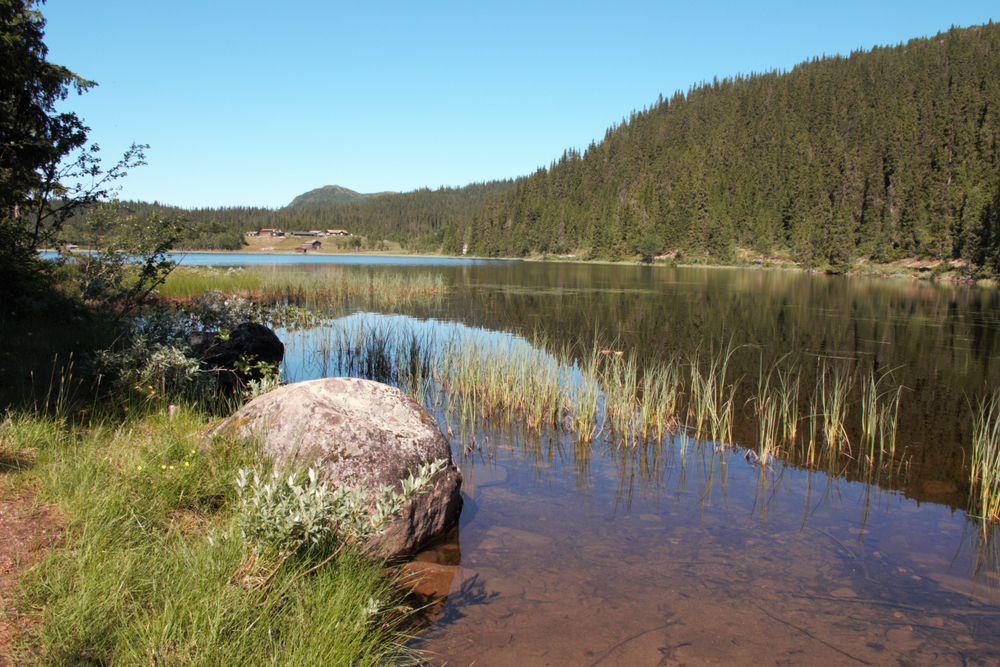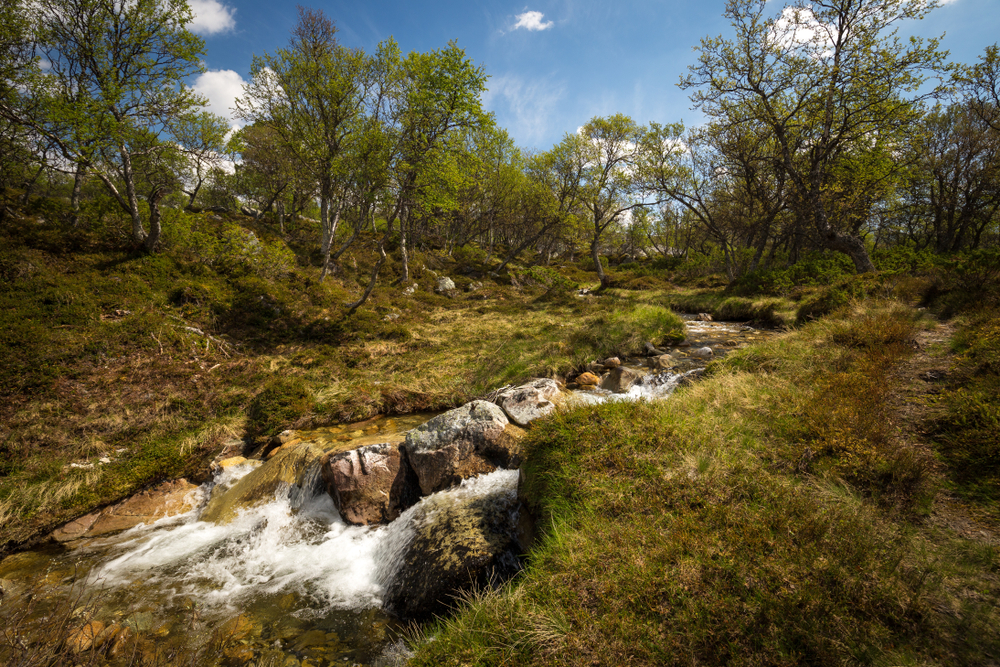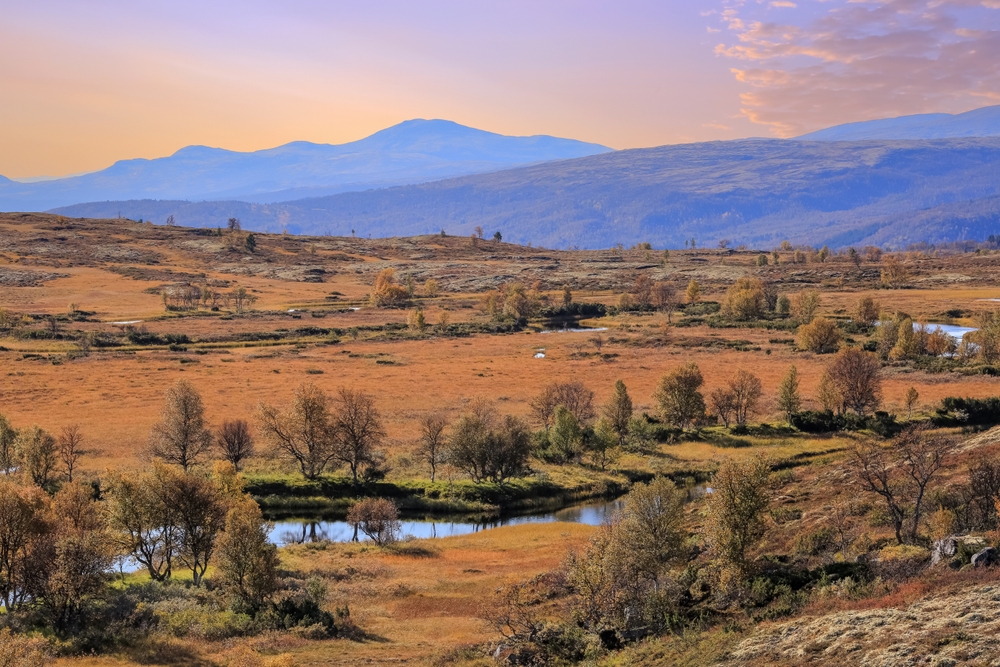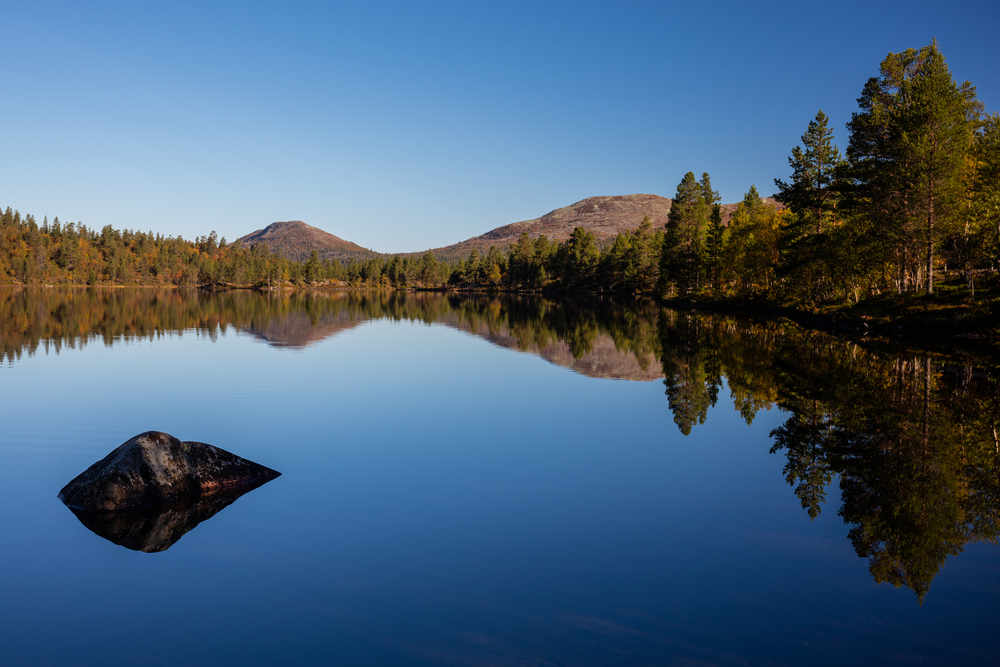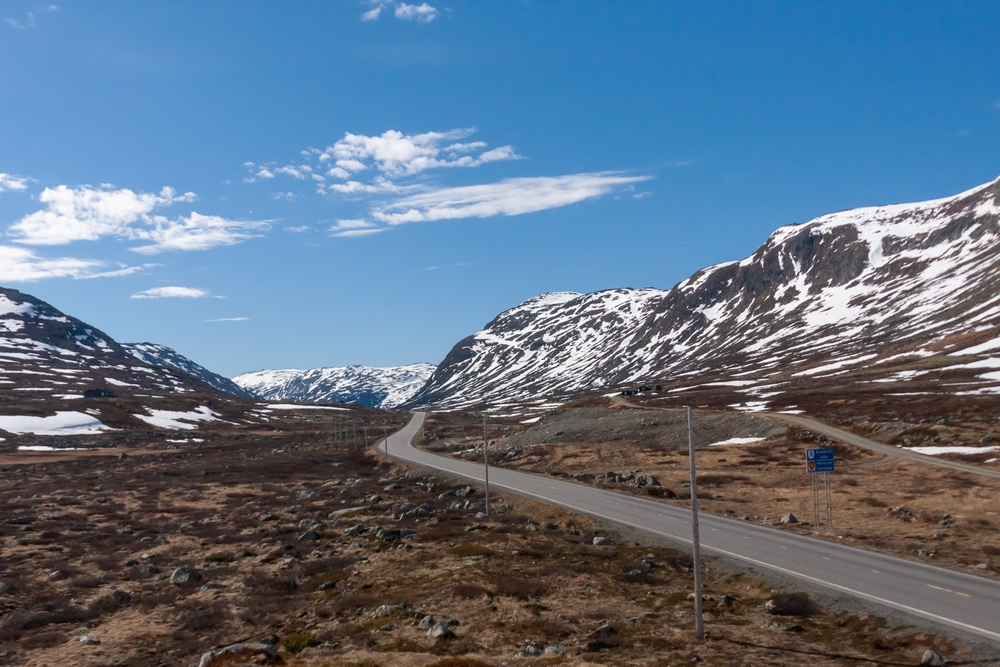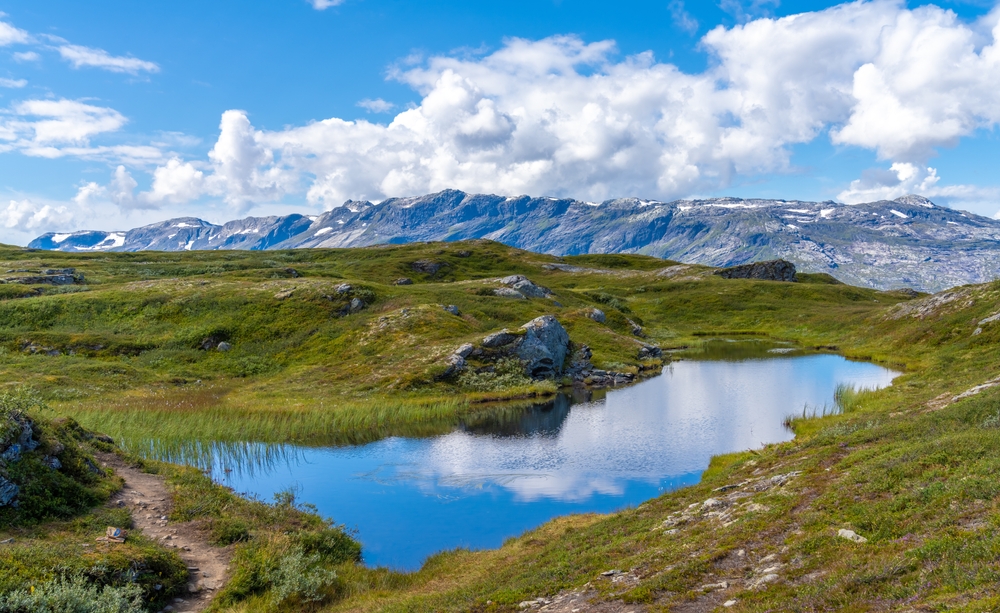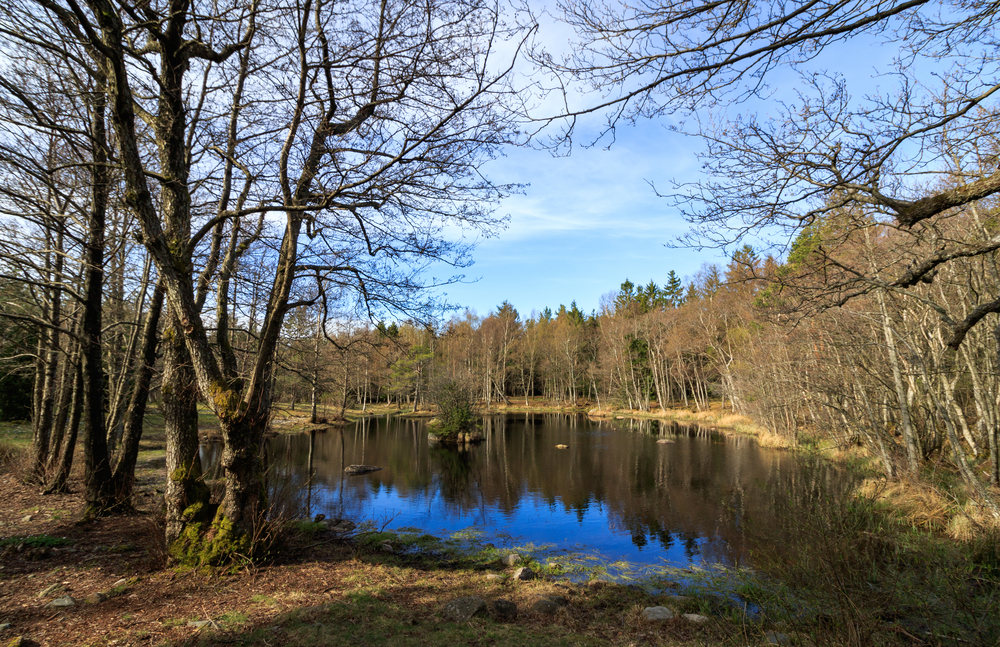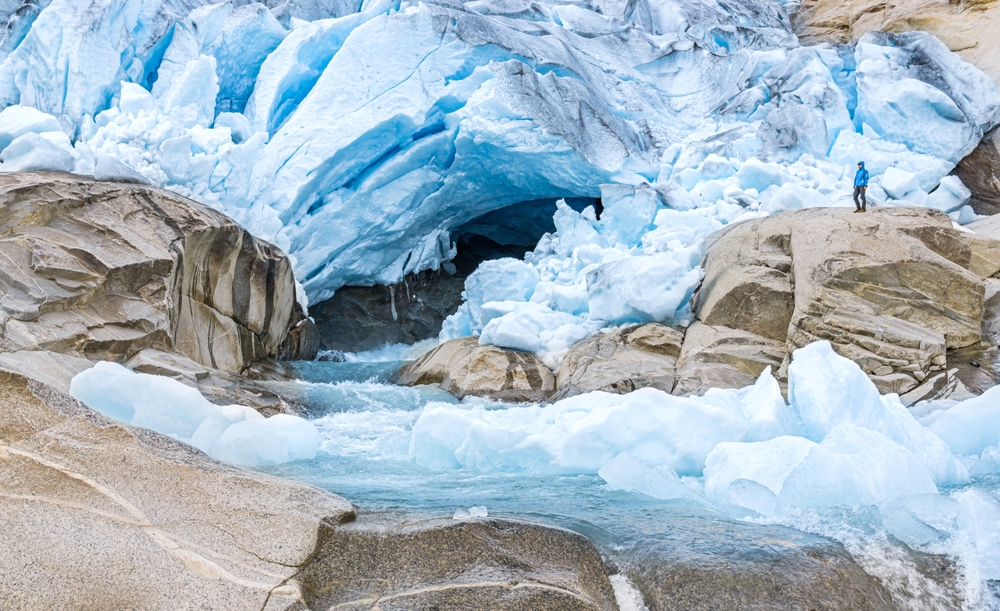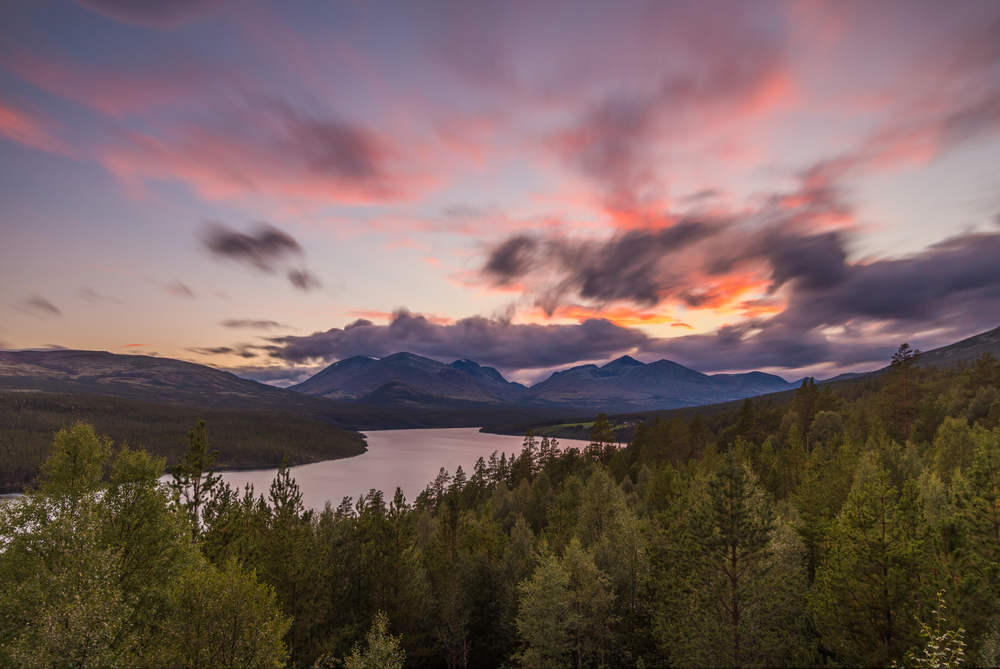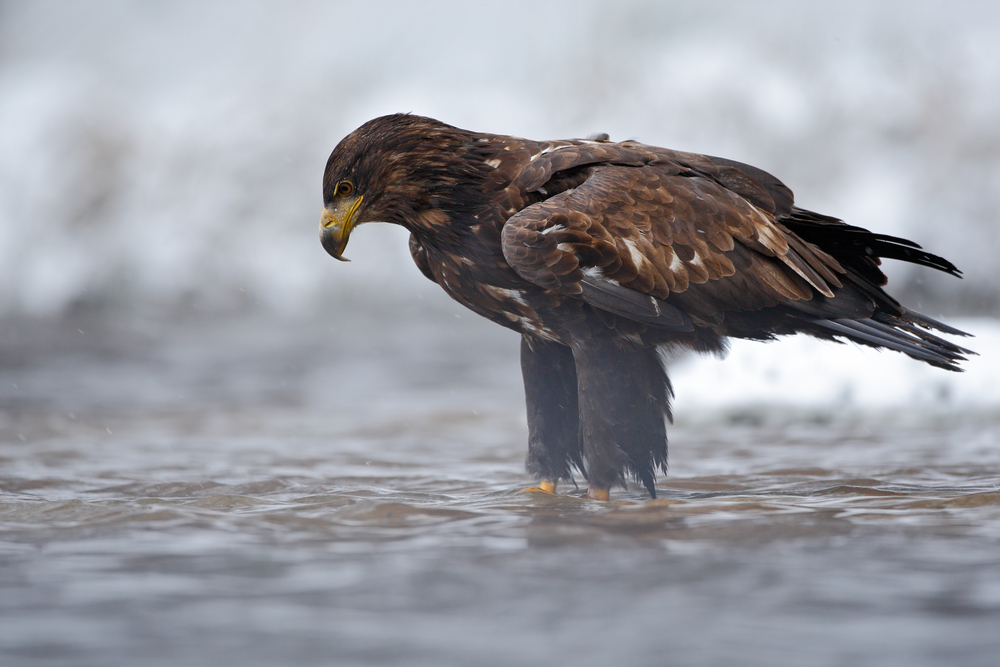Langsua Overview
Langsua National Park, known as Langsua nasjonalpark in Norwegian, is a protected area located in Innlandet County, Norway. The park covers approximately 212 square miles (548 square kilometers) and was established in 2011 to preserve the diverse landscapes, flora, and fauna of this region.
Situated in the central part of the country, the park features rolling hills, extensive wetlands, and alpine plateaus, making it a haven for biodiversity and a prime location for outdoor recreation.
The terrain of Langsua National Park is characterized by gentle mountains, vast boglands, and lush forests. The park lies within the Scandinavian Mountains, with elevations that are not as dramatic as Norway’s western fjords but still offer scenic beauty. The area is defined by open heathlands, meandering rivers, and large marshes that support a variety of plant species.
Birch and spruce forests dominate the lower elevations, while the higher altitudes feature sparse vegetation, including hardy alpine plants adapted to the region’s cold climate. The landscape transitions from dense woodland to open tundra, creating a striking contrast that attracts nature enthusiasts. Rivers such as the Etna and Dokka flow through the park, contributing to the rich wetland ecosystems that are essential for both plant and animal life.
Langsua National Park is home to a wide range of wildlife, including several species that are rare or endangered in other parts of Europe. Large mammals such as moose, roe deer, and red deer roam the forests, while wolverines and lynxes, though elusive, are present in the region. The park is also a vital habitat for reindeer, particularly in the alpine areas where they graze.
Birdwatchers will find Langsua particularly rewarding, as the wetlands and forests support species such as the golden eagle, rough-legged buzzard, and black grouse. Additionally, the area is known for its populations of boreal owls and woodpeckers, making it an excellent destination for avian enthusiasts.
Among the park’s popular features is its extensive network of hiking trails that provide visitors with opportunities to explore the varied landscapes. The gentle slopes and open terrain make it ideal for trekking, offering panoramic views of the surrounding mountains and valleys.
The park is also known for its traditional summer farms, or seters, which are still in use and give visitors a glimpse into Norway’s agricultural history. Many of these farms are accessible by foot and offer insight into the country’s pastoral traditions. In winter, the park transforms into a destination for cross-country skiing, with trails winding through snow-covered forests and open plateaus.
Visitors to Langsua National Park can engage with the landscape through activities such as hiking, camping, birdwatching, and wildlife photography. The park is a prime location for nature lovers seeking solitude and immersion in Norway’s pristine wilderness.
Due to its relatively gentle topography compared to Norway’s dramatic fjord regions, Langsua is accessible to a wide range of outdoor enthusiasts, from families to seasoned trekkers. The park also plays a role in local reindeer husbandry, and visitors may encounter traditional Sami herders in certain areas.
Conservation efforts in Langsua National Park focus on protecting its diverse ecosystems while allowing sustainable use of natural resources. The park’s wetland areas are of particular importance, as they provide critical breeding grounds for birds and other wildlife.
Efforts have been made to restore degraded habitats, particularly in regions affected by past forestry and agricultural activities. While climate change and human impact pose challenges, ongoing conservation initiatives aim to maintain the park’s ecological integrity.
Sustainable tourism practices and restrictions on motorized vehicles help minimize environmental disturbances, ensuring that future generations can continue to experience the park’s natural beauty.








































































